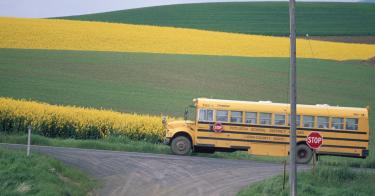As a former public school teacher, Kat S. deeply values education. She was glad her local public school had a good reputation for quality. But even though her son made honor roll consistently, Kat suspected something was wrong. She never saw him writing, and she felt he wasn’t getting the help he needed at school for his ADHD.
When her son’s school closed during the COVID-19 pandemic, she learned just how bad things were. Assessments showed that her "honor roll student" was three years below grade level in math and could barely write more than a few sentences.
Fortunately, Kat’s family lives in Arizona, where they had access to Empowerment Scholarship Accounts. Kat calls them "a godsend." With an ESA, families can access state funds to pay for private school tuition, tutoring, textbooks, online courses, special needs therapy, and numerous other educational expenses.
In 2011, Arizona became the first state to adopt an ESA policy. Just over a decade later, nine states have ESAs and several others—including Idaho, Iowa, Oklahoma, South Carolina and Texas—may soon follow suit.
>>> Rustic Renaissance: Education Choice in Rural America
It’s not hard to understand why. During the pandemic, lots of families got a rude awakening about the quality of their children’s education. That sent them searching for alternatives to their assigned schools. In a recent Morning Consult poll, two-thirds of Americans and 74% of parents of school-aged children said they support ESA policies that empower families with greater education choice.
But not everyone is on board. The teachers’ unions and their allies are doing everything in their power to block families from accessing alternatives to the district school system.
One tactic they’re employing is to claim that school choice policies either don’t benefit rural areas or are harmful to rural district schools. The Texas Association of School Boards claims that for rural families, "options other than their local public schools are few and far between."
Meanwhile, Oklahoma’s former Superintendent of Public Instruction Joy Hoffmeister claimed that school choice would spur so many students to leave rural district schools that the policy amounted to a "rural school killer."
These two claims—that there are no options in rural areas and that rural schools are imperiled because so many students will leave for those options—are mutually exclusive. They cannot both be true simultaneously, but they can both be—and indeed are—false.
First, as we detail in a new Heritage Foundation report, families in rural areas have access to more education options than ever before.
About seven in 10 rural families live within 10 miles of a private elementary school. While charter schools are scarcer in rural areas, they’re accessible in states that have encouraged their formation and growth. In Arizona, more than eight in 10 students live in the same zip code as at least one charter school.
Rural areas are also seeing the rise of micro-schools, a modern reimagining of the one-room schoolhouse. Groups like Acton Academy, Adamo Education, Great Hearts, Kai Pods and Prenda are teaching students in small groups, sometimes operating out of homes or church basements. Their approaches vary greatly—ranging from classical to Montessori—but all offer greater flexibility and individualized attention than the traditional classroom environment.
Additionally, high-quality virtual schools are available to anyone with a decent Internet connection—which is becoming increasingly available in rural America. A 2021 survey by the Pew Research Center found that 72% rural Americans said they have a broadband Internet connection at home, up 19 percentage points since 2016.
Kat lives in a rural area of Arizona and her son uses his ESA to learn online via Outschool. In addition to core classes like English, math and science, he takes several electives. One of his favorites was an "adulting" class where he learned how to manage a bank account, keep a check book, read receipts, and more. And, yes, he’s now reading and writing essays on grade level.
>>> School Choice Is a Political Winner
As for fears that the wide availability of education options would "kill" rural schools, that hasn’t happened. Arizona, for example, has consistently ranked among the top states for education freedom and choice over the past two decades. More students exercise their school choice options in Arizona than in any other state. If choice policies harmed district schools, then Arizona’s rural schools would be falling apart.
In fact, Arizona’s rural schools are improving much more than the national average. From 2007 to 2019, Arizona rural students’ fourth and eighth grade reading and math scores on the National Assessment for Educational Progress increased by a combined 21 points, while scores in rural schools nationally decreased by two points. On the most recent NAEP, post-pandemic, Arizona’s rural students were still up a combined nine points while rural students nationally dropped 17 points from 2007.
Far from being a "rural school killer," education choice policies like ESAs expand educational opportunity for rural families while spurring rural district schools to improve their performance.
By embracing education choice policies, state lawmakers can deliver on the promise of America’s education system and ensure that all children have access to the learning environment that best meets their individual needs and helps them to achieve their full potential.
This piece originally appeared in Fox News




